In January of 2016, Professor Susan Siegfried reached out to Pablo Alvarez and myself with a proposal: a class focused on 19th century color plate books, tightly focused on the use of original materials, with weekly meetings in Special Collections and out-of-class assignments, drawing heavily on the private collection of Dr. James Ravin, MD, of Toledo. Would we facilitate such an endeavor? Could we?
The logistical details were intimidating. While the Library frequently both loans and borrows individual items for exhibits, borrowing an entire collection would be much more complicated. And could we manage the time commitment? In addition to the weekly reservation of our teaching space and the curator’s time, such a class would place a significant burden on our Reading Room, both in terms of the level of use in the reading room itself, and available space for materials in the hold room. Additionally, conservation staff would be needed to pack, transport, and provide condition reports for the borrowed materials.
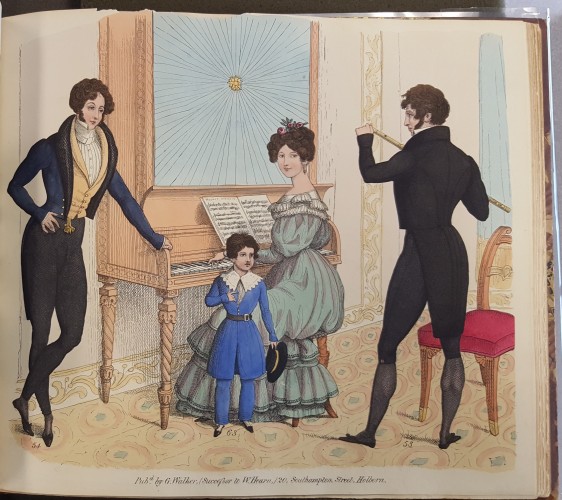
Walker, George. Cyclopedia of British Costumes from the Metropolitan Repository of Fashion. May 1828 – November 1832. On Loan from Dr. James Ravin.
Still, we were intrigued. This was an opportunity to offer students an utterly unique opportunity to explore the print culture of eighteenth- and nineteenth-century Europe. From books of costume, to fashion plates, to caricature, Dr. Ravin’s collection includes extraordinarily rare titles held at only one or two institutions nationwide, almost all in extraordinarily fine condition. By engaging in hands-on use of this spectacular collection on a weekly basis, seminar students would gain a level of familiarity that would enable them to engage deeply in an analysis of emerging European modernity. Was this not exactly the kind of unique learning opportunity that makes the campus experience at Michigan so powerful? If not U-M, then who should do it?
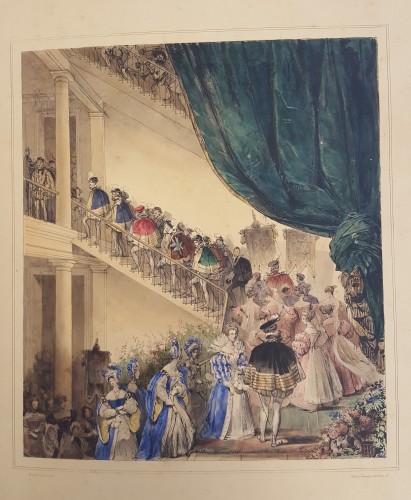
Lami, Eugène. Quadrille de Marie Stuart (Paris: A. Fonrouge, 1829). On Loan from Dr. James Ravin.
We agreed to explore the possibility, and after consultation with our Director Martha Conway, Reader Services Librarian Kate Hutchens, and Head of Preservation and Conservation Shannon Zachary, we committed ourselves to the experiment. Over the course of the spring and summer, Professor Susan Siegfried and graduate student John Finkelberg visited Dr. Ravin’s home multiple times to review, select, and photograph volumes for the class. By late Fall, a loan agreement had been signed and on a frosty December day, I accompanied Conservation Librarian Marieka Kaye and Conservation Technician Brooke Adams to Dr. Ravin’s home to pack and transport 55 volumes back to the Special Collections Library.
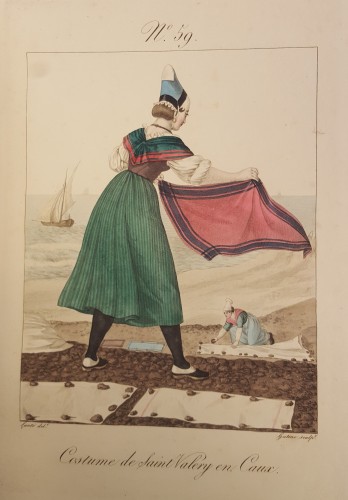
Lanté, Louis Marie, Pecheux, and George Jacques Gatine [illustrators]. Cent cinq costumes des départements de la Seine Inférieure, du Calvados, de la Manche et de l’Orne (Paris: Durand and Caen: Mancel, ca 1830). On Loan from James Ravin.
During the course of the 2017 Winter Term, I was privileged to join nearly all of the meetings of HISTART 497: Modernity and Print Culture. At first, both the undergraduate and graduate students were hesitant in their physical handling of materials and in the interpretations that they offered during informal in-class presentations. However, their confidence quickly grew, as did their enthusiasm for each new category of materials: Ackermann’s Repository of the Arts and periodical publications; print series such as Robert Dighton’s The Twelve Months (ca. 1790); volumes documenting elite masquerades, such as the 1829 Quadrille de Marie Stuart, published to document the duchesse de Berry’s ball/historical re-enactment of the 16th century French court; volumes of social types, such as Thomas Busby’s Costume of the Lower Orders of London (1820); books of national costume at home and abroad, such as Sir Charles Doyley’s The Costume and Customs of Modern India (1830), and caricatures, such as those appearing in Robert Cruickshanks’ Dandies (1818-19), and D.T. Egerton’s Fashionable Bores; or Coolers in High Life (1824).
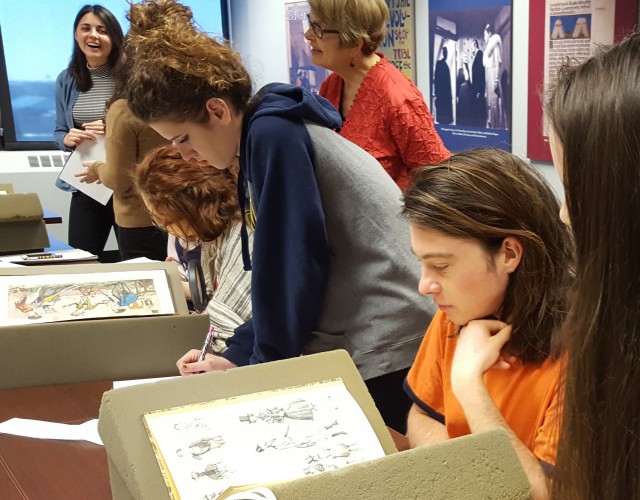
History of Art 497: Modernity and Print Culture
As an observer, I was extremely impressed by the level of students’ engagement with the materials, the care that they took in handling fragile items, and the original analyses that they presented in their final projects. As Dr. Ravin once commented, it is a mark of how fantastic each aspect of the collection is, that as each week uncovered new delights, several students’ updated their initial final project proposals to focus on, or incorporate materials seen in later sessions. Their final presentations covered topics such as the origin and significance of the Dandy figure in Regency England, the effects of time and seriality in the fashion prints of French periodicals, the rhetoric of description in the English women’s magazine La Belle Assemblée, and European racial anxieties as they manifested in reactions to hair dressing a la Chinoise.
In reflecting on the course, students described their experience with superlatives like incredible, amazing, and phenomenal. While they also noted the challenges presented by the need to study materials within the limited hours our reading room is open, particularly in combination with work schedules and other commitments, most felt that the value of this course outweighed these difficulties.
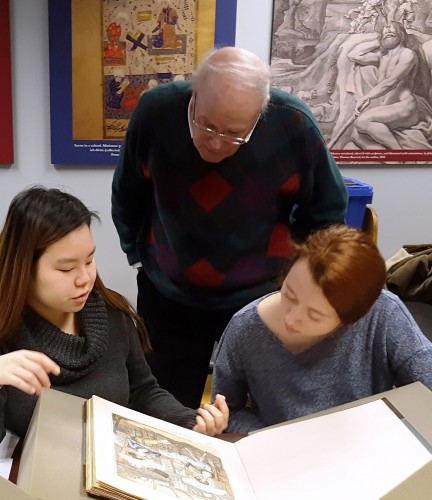
Dr. James Ravin with students Amy Gook and Dallas Lindenau, examining Dandies by R. Cruikshank R, published in London by T. Tegg and S.W. Forbes, 1818-19. Private Collection of James Ravin.
I am grateful to Professor Susan Siegfried for the opportunity to be a fly on the wall throughout this course; to Dr. James Ravin for making the course possible through the loan of his truly world-class collection of color plate books; and to the students for their engagement with the course.
Additionally, I wish to express thanks to the Conservation Department, especially Shannon Zachary, Marieka Kaye, and Brooke Adams; to Reader Services Librarian Kate Hutchens and all of my colleagues and the RSA’s staffing the reading room during a particularly challenging semester; and to all of my fellow Special Collections instructors who sacrificed access to our teaching space for 4-5 hours every week, and allowed me an unfair share of space in the hold room.
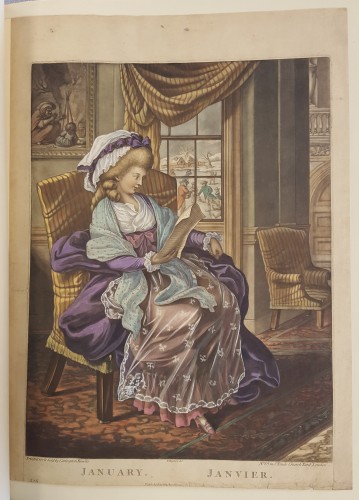
Dighton, Robert. "January" from The Twelve Months (London: Carrington Bowles, c. 1790). On Loan from Dr. James Ravin.
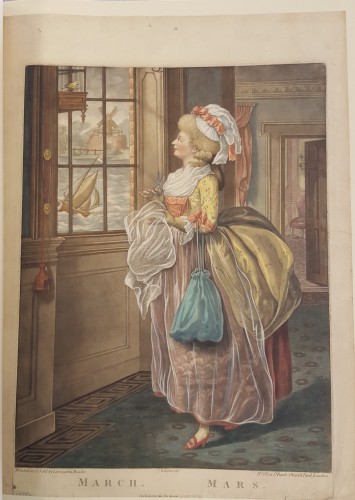
Dighton, Robert. "March" from The Twelve Months (London: Carrington Bowles, c. 1790). On Loan from Dr. James Ravin.
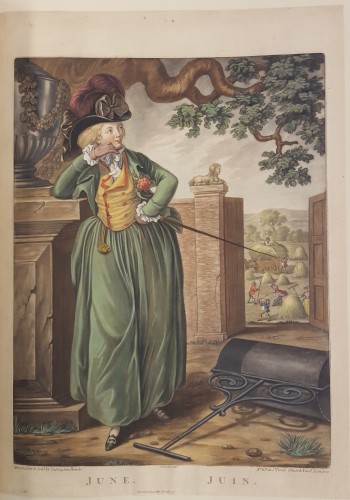
Dighton, Robert. "June" from The Twelve Months (London: Carrington Bowles, c. 1790). On Loan from Dr. James Ravin.
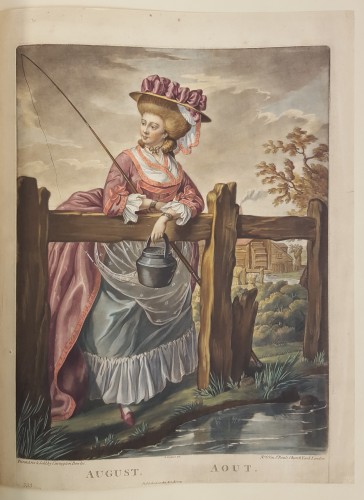
Dighton, Robert. "August" from The Twelve Months (London: Carrington Bowles, c. 1790). On Loan from Dr. James Ravin.
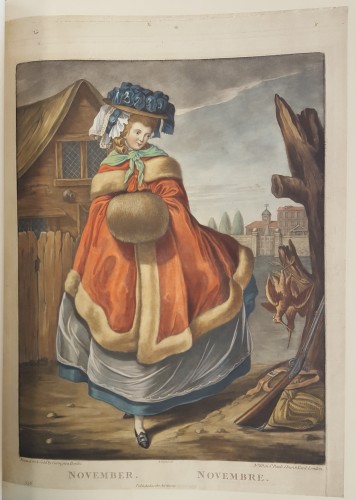
Dighton, Robert. "November" from The Twelve Months (London: Carrington Bowles, c. 1790). On Loan from Dr. James Ravin.